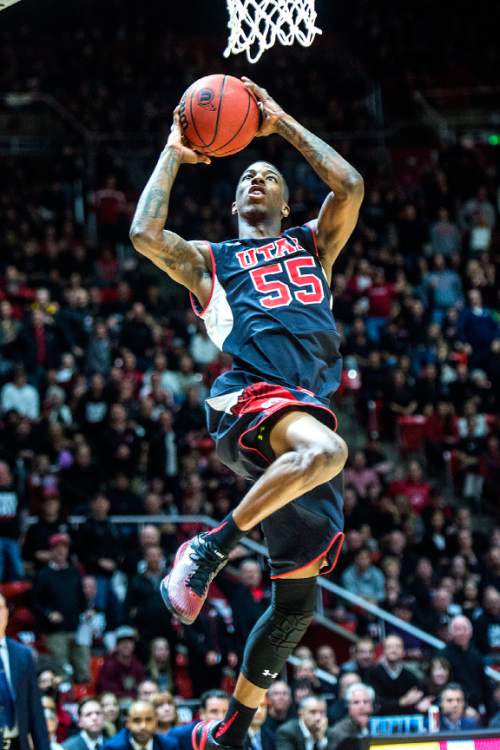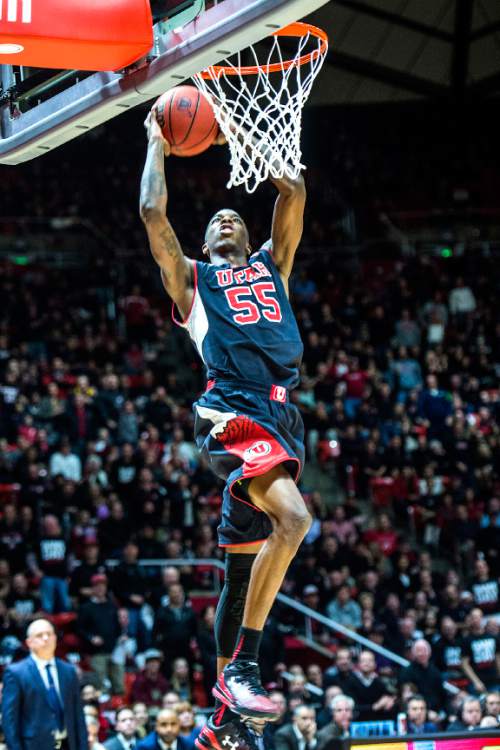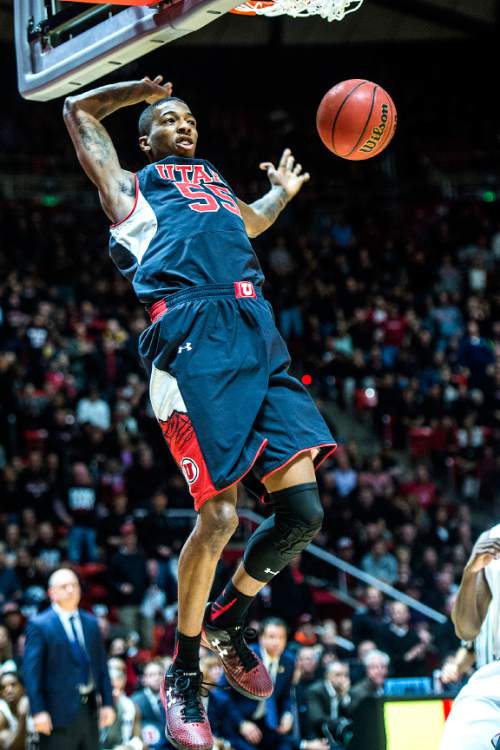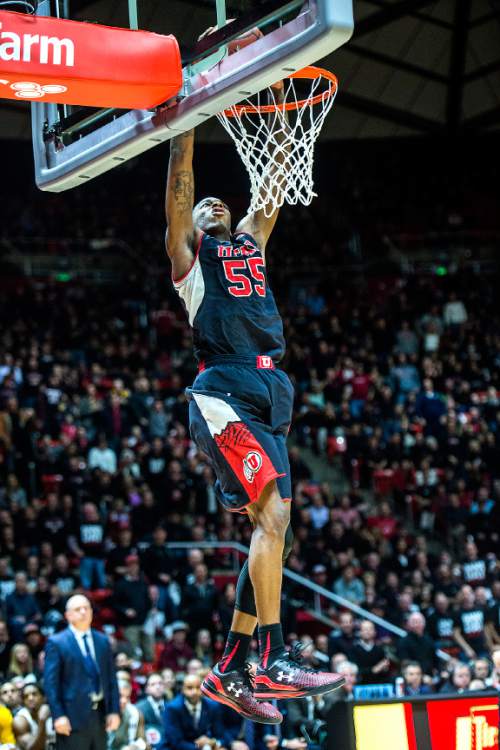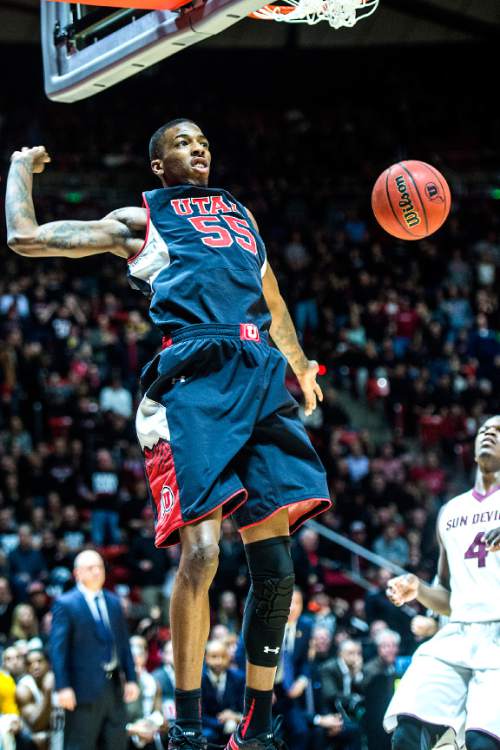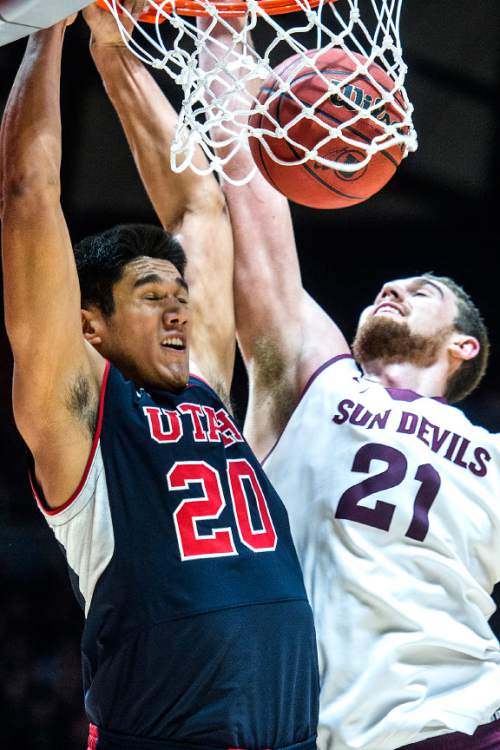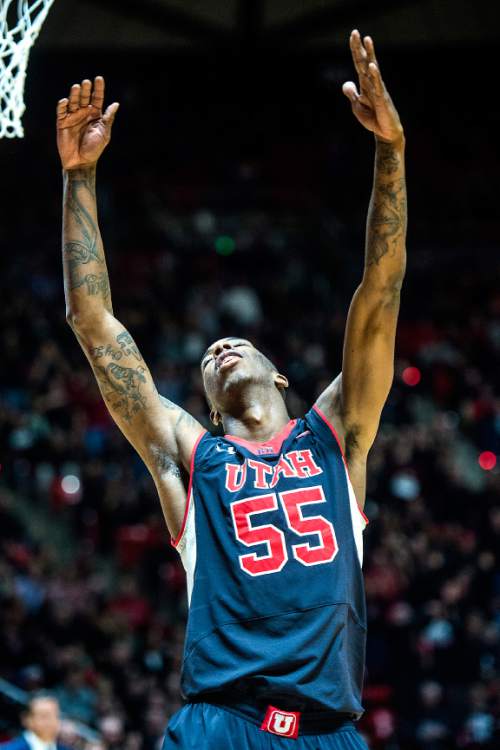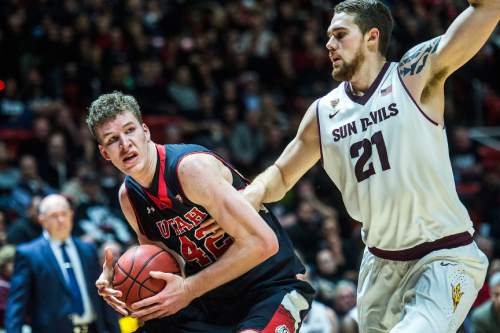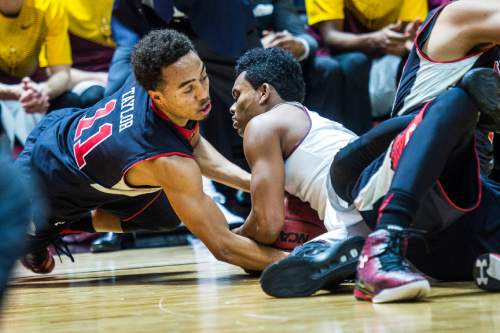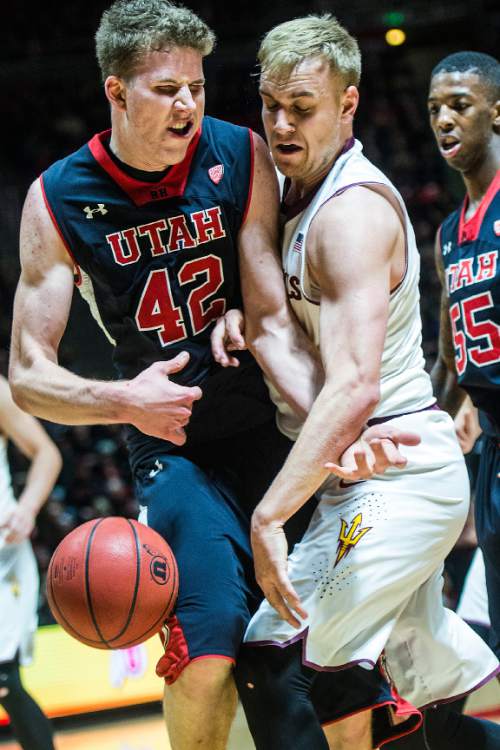This is an archived article that was published on sltrib.com in 2015, and information in the article may be outdated. It is provided only for personal research purposes and may not be reprinted.
It resembled a warmup drill as a procession of Wildcats leaped for the ball and circled back to do it again, and again — 41 total times.
No. 7 Arizona is 21-1 this season when it wins the rebounding battle, and against the Utes in Tucson this January, it was a downright rebounding slaughter. Only Arizona's margin against Oakland (28) exceeded its 21-rebound edge over the shell-shocked No. 13 Utes.
Utah was outmuscled.
Outworked.
Anything with the "out-" prefix.
And they know it. Ever since, whenever the topic of rebounding has arisen, Utah's coaches have mentioned Tucson, said head coach Larry Krystkowiak on Thursday.
They have a plan to stop the Wildcat rebounding machine — which ranks seventh nationally with an average margin of plus-8.7 per game — on Saturday night, and that plan is …
Wait for it …
To try harder.
"If we come out fighting from the start, I think it's going to be a really good game on the boards," said sophomore forward Chris Reyes, who admitted "it caught me by surprise" to witness Arizona's otherworldly athleticism firsthand.
The Wildcats nabbed 11 straight boards during an almost-10 minute stretch in the first half in Tucson, recovering from a 12-6 deficit to lead 25-24.
Later, in the second half, they gathered nine straight, pogo-ing over Utah's frontcourt players for 17, all told, at the offensive end.
On one sequence, Brandon Ashley recovered a missed 3-pointer from Brandon Taylor, Dusan Ristic corralled a miss from teammate Parker Jackson-Cartwright, and Stanley Johnson put back Ristic's putback, earning a trip to the line.
(Which, oh by the way, Arizona does more than all but six teams, averaging a whopping 25.3 free throws per game.)
"I'm anxious to see if Utah can match their physicality," said Pac-12 Networks analyst Don MacLean. "That was the story of the first game: Arizona really kind of pushed them around."
The Ute bandwagon isn't the only one to thud over a pothole in Tucson's painted area.
For the unacquainted, Arizona is as tall, as long, as fast and as powerful as almost any team in the nation.
The Wildcats are first in the nation in defensive rebounding percentage, at 77.6 percent, and feature four of the top 15 offensive rebounders in Pac-12 play in Rondae Hollis-Jefferson, Kaleb Tarczewski, Johnson and Ashley.
To best illustrate which Wildcats are rebounding threats, print out their roster. Draw a red circle around the whole thing. Now you know.
"We're lucky in that we have two wing players, Stanley Johnson and Rondae Hollis-Jefferson, who by the standards of the game today, do as good of a job as anybody that plays," Arizona head coach Sean Miller told Wildcat Basketball Weekly.
Also potentially disconcerting for Utah: As if Arizona wasn't already big enough, Miller toyed with playing 7-footers Ristic and Tarczewski simultaneously in a rout of Colorado on Thursday, according to the Arizona Daily Star.
For the most part, Utah hasn't been bad on the boards. The addition of Reyes and freshman big man Jakob Poeltl has helped them rank second in the Pac-12 in rebound margin per game, at plus-5.2, but they've averaged just plus-2.1 in conference games and are last in the Pac-12 in offensive rebounds, at just nine per game.
Senior point guard Delon Wright thinks the Tucson debacle was largely due to the fact that "some guys were new to playing them, and it was kind of a shock to see how strong they were and how physical they played.
"I think this time around, we're more prepared."
MacLean also points out that in the last road environment similar to Saturday's expected sellout, at the Thomas & Mack Center, Arizona wasn't itself and was outrebounded 46-33 by the Rebels.
"We'll see if they learned from that," he said.
Likely, they have. Said Miller: "What can be more important than getting the ball?"
On a basketball court, not much.
Twitter: @matthew_piper


